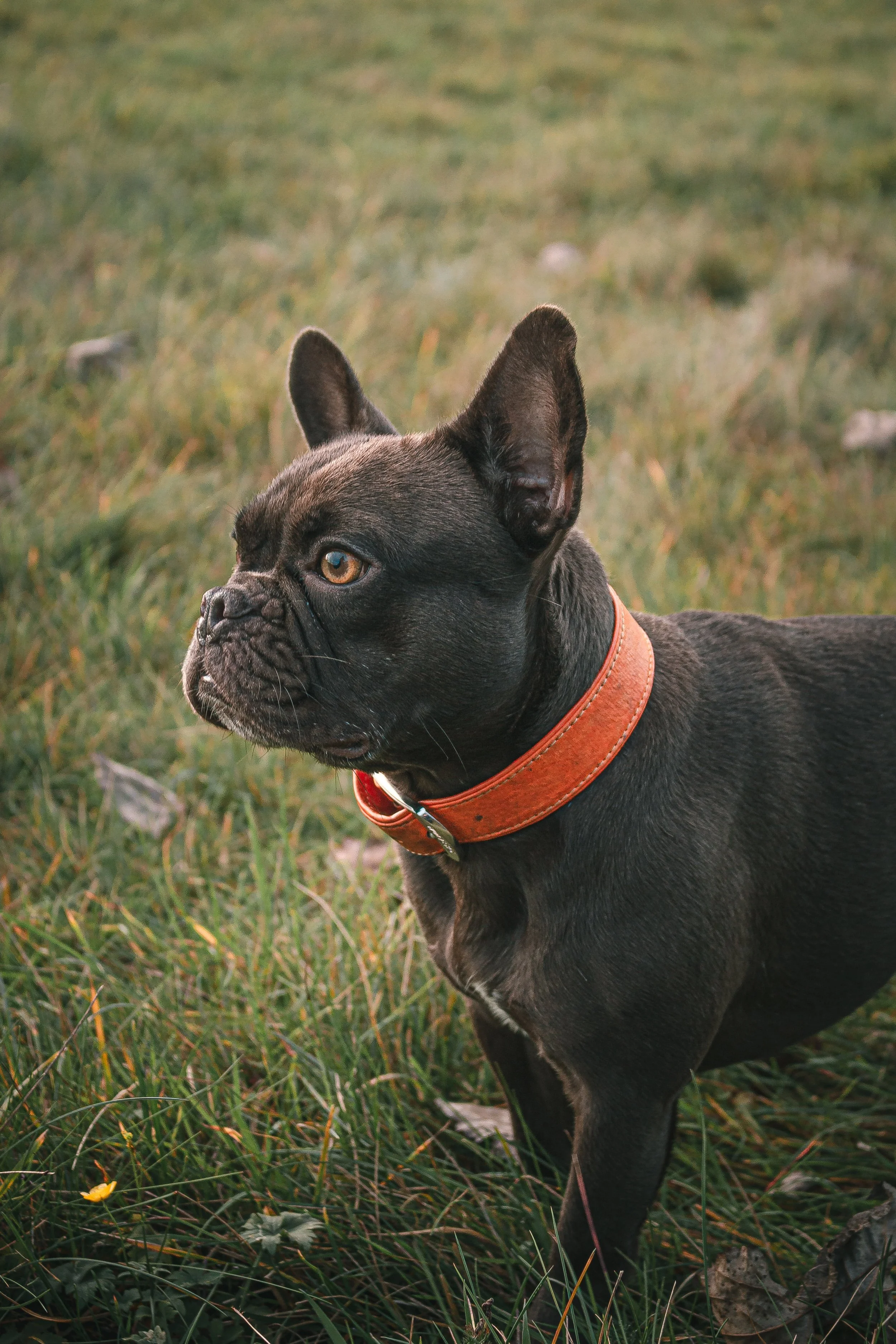Types of Dog Collars
Collars are, arguably, the most important tool in dog ownership. Not only do they provide a way to quickly leash your dog, they can also include important information, such as the owner's contact information in case of an emergency and up-to-date vaccination records. Finding the perfect collar can be challenging, but not impossible.
When considering investing in a new collar for your dog, finding the right fit is most important. Collars should be snug, only allowing for two fingers to fit in between their skin and the fabric. There's also a few points to consider when deciding on the best style of collar based on your dog's individual needs:
Will the collar be for walking or everyday use?
Does your dog pull when on a leash?
How often will they be wearing their collar?
How comfortable or heavy is the collar? This is especially important in smaller breeds, as a heavy collar can cause neck strain after too much use.
Common Styles of Collars
Flat Collars
Flat collars are the standard style of dog collar. They lay flat against the dog's neck, with a metal ring sewn in for attaching to the leash. The ring can also be attached to an ID tag for your dog's safety if they were to escape. They are most effective for everyday use, but can become less effective for walking. Many dogs that pull on their leash can become choked or easily slip out of a flat collar. They are commonly made with fabric, nylon, or leather materials, each providing different benefits based on each dog's needs.
Martingale Collars
Martingale collars are specifically designed for dogs with smaller heads, like Greyhounds and Whippets, but can be effective on any dog if used properly. They are a hybrid between a flat collar and a slip collar, with fabric under the chin and a chain behind the head. They should be worn high on the neck, resting just below the base of the skull. They're most effective in preventing a dog from accidentally slipping out of their collar, but they can be beneficial in preventing pulling as well. When a dog puts tension on the collar, it tightens, allowing for greater control of the dog's movement. Because of the tightening aspect, it's important to never leave dogs unattended while wearing a Martingale as they can become injured if they were to get caught on something. Instead, reserve this style of collar for walks only.
Slip Collars
Slip collars are commonly referred to as choke chain or choke collars. They're usually made of metal and are designed to tighten as a dog puts tension on them. The tightening sensation is intended to help indicate to the dog when to stop pulling. It's important to always check the effectiveness before each use. An ineffective slip collar might not loosen as easily, which can lead to a constant tightening sensation around the dog's neck. This, in turn, limits breathability and causes strain on the neck. When used properly, this style of collar can be a great training aid in reducing the amount that a dog pulls when on a leash. As with Martingales, it's important to limit this collar for walk use only, because the tightening effect can cause injury if it were to get stuck.
Headcollars
Headcollars, such as a Gentle Leader, slip over a dog's snout instead of their neck. This type of collar is especially useful in dogs that frequently pull on their leash. They don't apply any pressure to the dog's throat, which limits the possibility of injury to the trachea. They clasp behind the head, with a leash attachment under the jaw. Headcollars can be a successful training tool, but, again, should only be used for walks. Some dogs may become nervous about a foreign object clasped against their face, but can be guided with positive reinforcement and praise.
But which one is best?
To choose the best collar for your dog, consider the following factors:
Size and breed: Measure your dog's neck and refer to the manufacturer's size chart to find the right size. A well-fitting collar should allow two fingers to slide comfortably between the collar and your dog's neck. Consider your dog's breed and its specific needs, as some breeds may require special types of collars.
Purpose: Determine the primary function of the collar. Standard collars are suitable for everyday use and identification, while training collars may be used to teach good behavior or manage pulling. If your dog has a tendency to escape or slip out of collars, you might consider a martingale collar.
Material: Choose a durable and comfortable material such as nylon, leather, or eco-friendly options like hemp. Nylon collars are lightweight and come in various colors, while leather collars are durable and long-lasting. Consider your dog's activity level and exposure to water when selecting a material.
Adjustability: Look for collars with adjustable features to ensure a proper fit as your dog grows or its coat changes.
Visibility and safety: Reflective or LED collars can help increase your dog's visibility during nighttime walks, ensuring their safety.
Style and personalization: Select a collar that matches your dog's personality and your preferences. You can choose from various colors, patterns, and designs. Personalized collars with engraved or stitched contact information can help in case your dog gets lost.
Budget: Determine your budget and choose a collar that offers the best combination of quality, functionality, and style within your price range.
While choosing the right collar can seem daunting, knowing how each type works is the first step in making the right decision for you and your pet. If a collar alone doesn't seem to be effective, it's important to remember that any collar can be combined with a harness for added security while out on an adventure. Remember to regularly check your dog's collar for wear and tear, and replace it as needed to ensure their safety and comfort.

